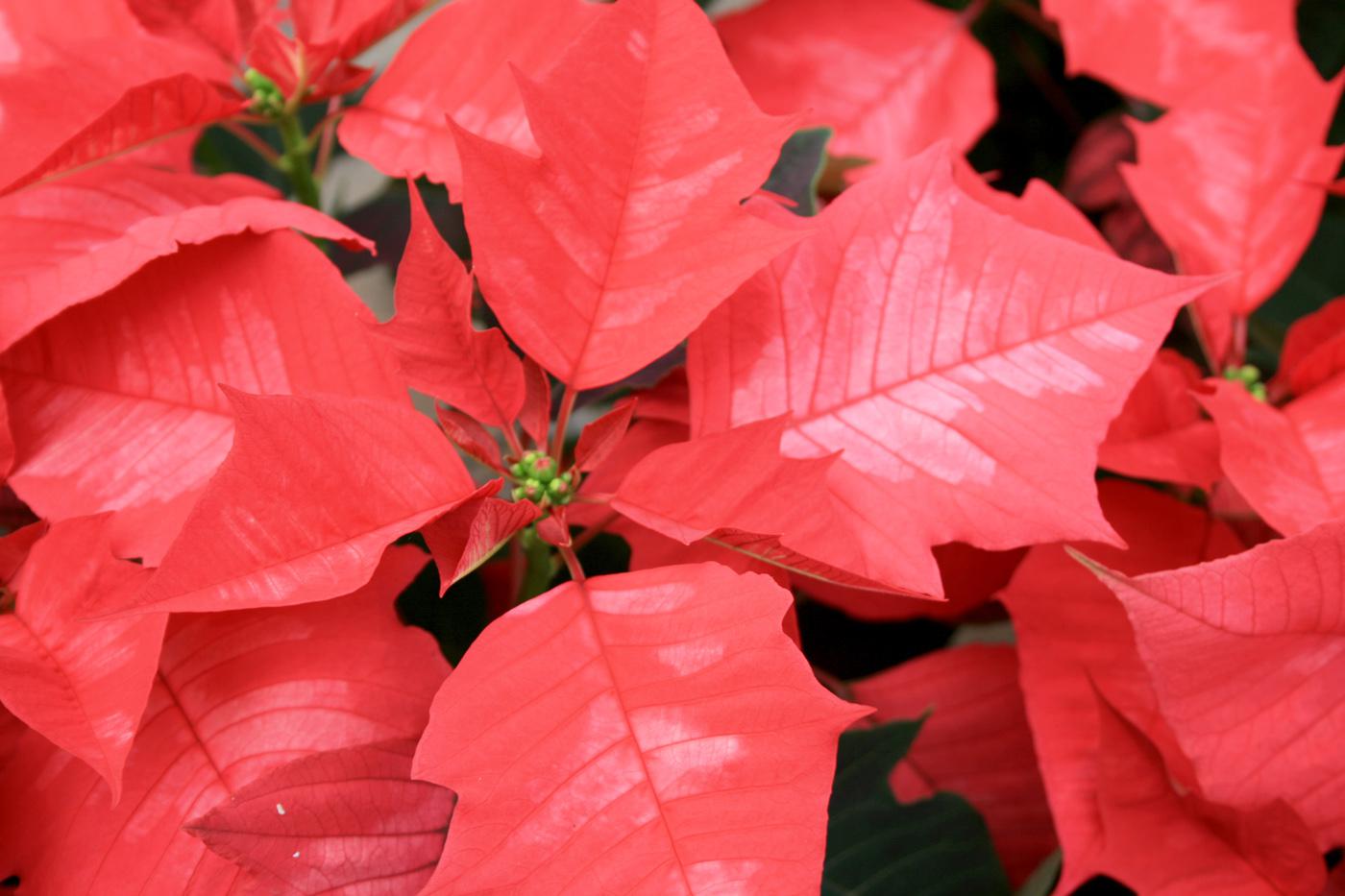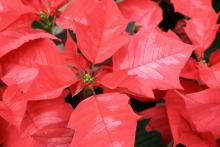Information Possibly Outdated
The information presented on this page was originally released on December 5, 2011. It may not be outdated, but please search our site for more current information. If you plan to quote or reference this information in a publication, please check with the Extension specialist or author before proceeding.
Traditional poinsettias bring Christmas cheer
Besides the Christmas tree, the poinsettia is the plant most often associated with the Christmas season. You can hardly go wrong with their colorful bracts brightening your decorations.
The color spectrum of poinsettia is truly remarkable. Colors range from red to white to even maroon, making it hard to choose favorites. There are bicolored, speckled and marbled poinsettias. And if that’s not enough, growers are even painting leaves and adding glitter.
When shopping for poinsettias, be aware of the wide variety available. Take your time to select the very best. Poinsettias are fragile plants, and the stems can break quite easily from mishandling.
Be aware that the paper or plastic shipping sleeves around most poinsettias can hide damage that happened in transport. Pay particular attention when removing them; never try to slide the sleeve off because you could damage the plant. Always tear or cut the sleeve off.
The bracts should be completely colored and fully expanded. If they aren’t, the plants were probably shipped before they were completely ready.
Growers and florists have been using poinsettias in combination containers in recent years. Poinsettia combination containers sometimes feature contrasting colors, such as snow white chrysanthemum with the traditional red poinsettia.
We at Southern Gardening recommend combining poinsettia with the Mississippi Medallion winner Diamond Frost euphorbia. Both are in the euphorbia family and have similar growing characteristics and care needs.
The following care tips can help keep your poinsettia looking good long after the Christmas holidays.
Poinsettias need at least six hours of indirect sunlight daily and comfortable room temperatures. When grown in the greenhouse, temperatures are about 72 degrees during the day and 60 degrees at night. The closer you can provide to these same temperatures, the longer your poinsettia will last.
Don’t let the leaves or bracts touch the window glass. Outside temperatures are readily transferred through the glass, and the cold can damage the plant. A poinsettia might look great by the front door when guests arrive, but it will perform better if it is shielded from the sudden temperature changes caused by open doors.
While poinsettias like cool temperatures, those below 50 degrees will harm the foliage and colorful bracts. So on the way home after purchasing your plants, be sure to have the new poinsettias carefully covered, taking care not to break any branches and stems.
Probably the most important thing to remember is not to overwater these plants. Poinsettias are sensitive to wet feet, and root rot will set in very quickly. The potting mix should feel dry to the touch before watering, and be sure the decorative sleeve has drainage holes.
Some people are sensitive to the milky, latex sap in the poinsettia and may develop a skin rash. To avoid this problem, always wash your hands after handling your poinsettia.
So pick plenty of your favorite poinsettia colors, and use them to brighten the Christmas season.








